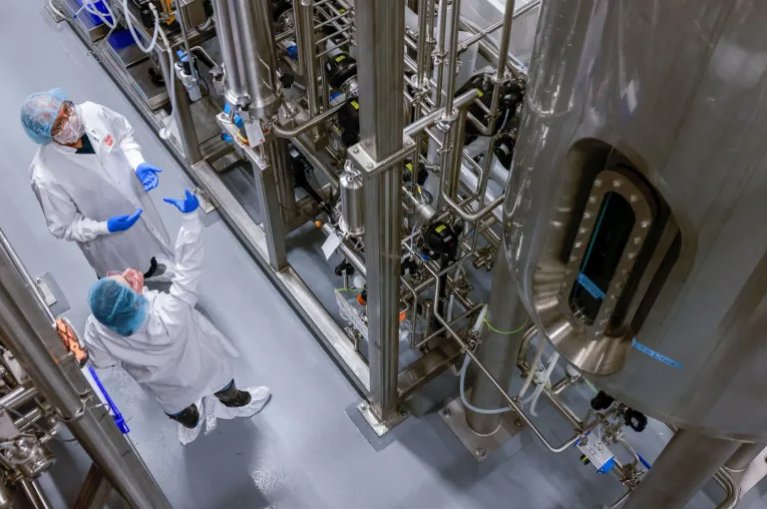
In November of the previous year, the startup “Upside Foods,” widely acknowledged as a frontrunner in its industry, garnered attention for its longstanding assertion that it was ready to mass-produce complete chicken pieces, a potential breakthrough that, if proven, would position it as a leader in the competitive landscape.
Headquartered in Berkeley, California, and with the goal of developing cost-effective lab-grown meats (one of just two companies licensed for cultured meat sales in the United States), the company secured over half a billion dollars in funding. The public-facing aspect of the company showcases rows of shiny stainless steel bioreactors, each encircled by a network of pipes, suggesting that the enticing chicken slices they offer are crafted in a cutting-edge facility.
Contrary to this portrayal, the production facility in Emeryville narrates a different story about how “Upside Foods” creates its chicken. According to a recent investigation by Wired magazine, the company’s primary product, delectable whole chicken pieces, are manually fermented in much smaller lab vessels than the massive bioreactors the company claims to utilize. Former and current employees contend that these large bioreactors lack the capability to ferment the tissue sheets essential for producing complete chicken slices.
Instead, a labor-intensive and impractical process involves manually pulling thin layers of cells and merging them to form a sizable piece of chicken. This approach is not only costly but demands extensive hours of labor to yield even a modest amount of meat. Notably, this process unfolds in a laboratory not featured in the factory tours provided to journalists and the public. Essentially, the company relies on a significant workforce, substantial plastic use, and energy consumption to produce minimal quantities of meat.
While the lab-grown chicken produced in the laboratory has obtained approval from the U.S. Food and Drug Administration (FDA), uncertainties persist regarding its competitiveness with real chicken. With retail chicken prices reaching up to $5 per pound, lab-grown chicken encounters several hurdles in the market. The production cost remains unclear, and only a select few pieces are sold at a premium price of $45 at the esteemed Michelin-starred restaurant Bar Crenn in San Francisco.
The public tasting event at “Bar Crenn” was anticipated to signify the advent of lab-grown meats. However, “Upside Foods” faced technical setbacks while projecting an image of having successfully overcome the primary scientific challenge of scaling up the production of whole meat pieces.
These revelations prompt questions about the accomplishments of meat companies after investing nearly $3 billion over the past seven years. The commercial viability of specific cultured meat products is still uncertain.
In essence, 2023 underscored how the rush toward the future could, at times, neglect fundamental considerations such as safety, feasibility, and environmental impact. These setbacks indicate that innovation necessitates equilibrium, discernment, and meticulous examination of its enduring implications. Hopefully, the lessons learned this year will serve as a compass for developing technologies that are more responsible and sustainable in the future.
Leave a Reply